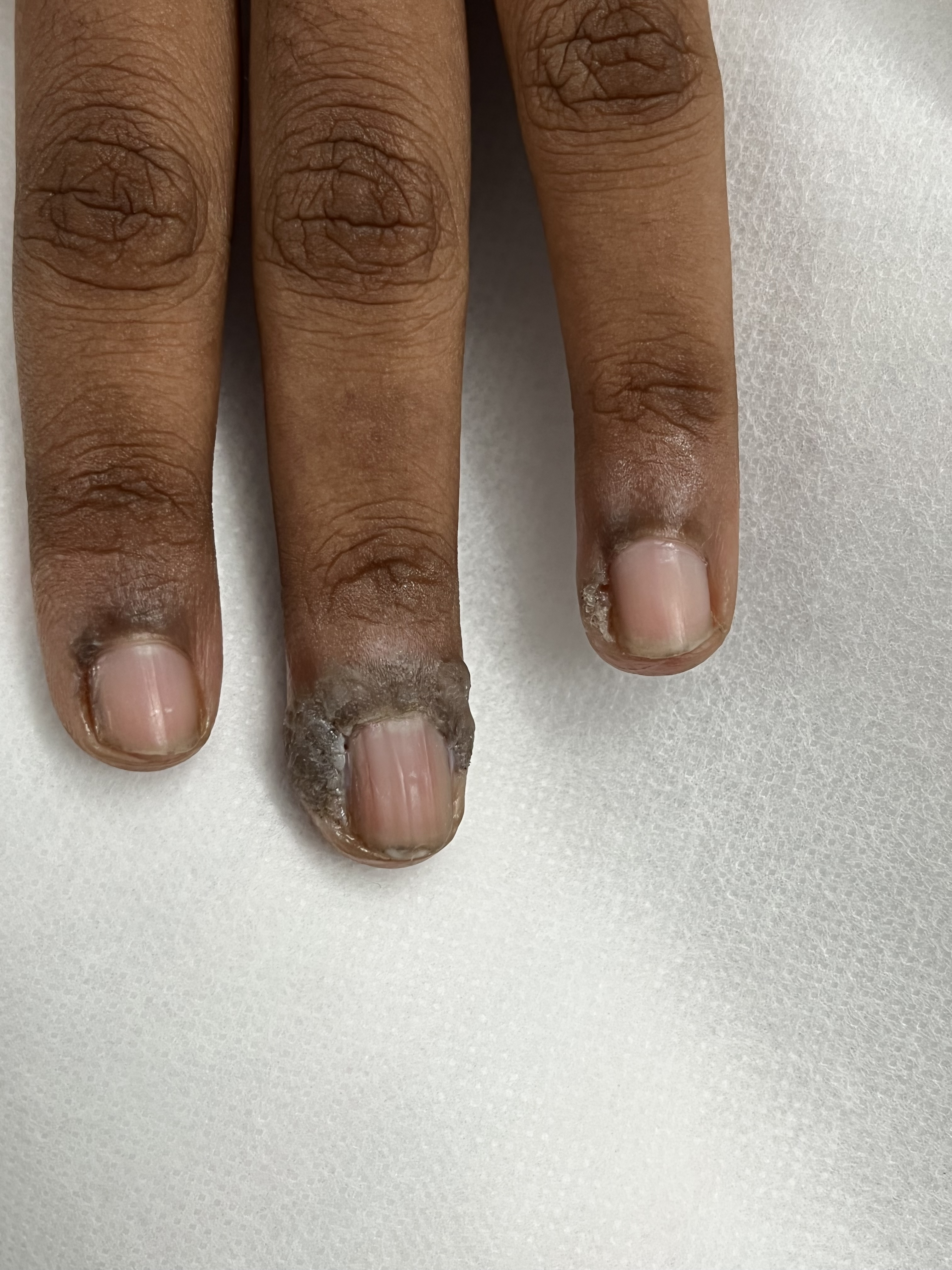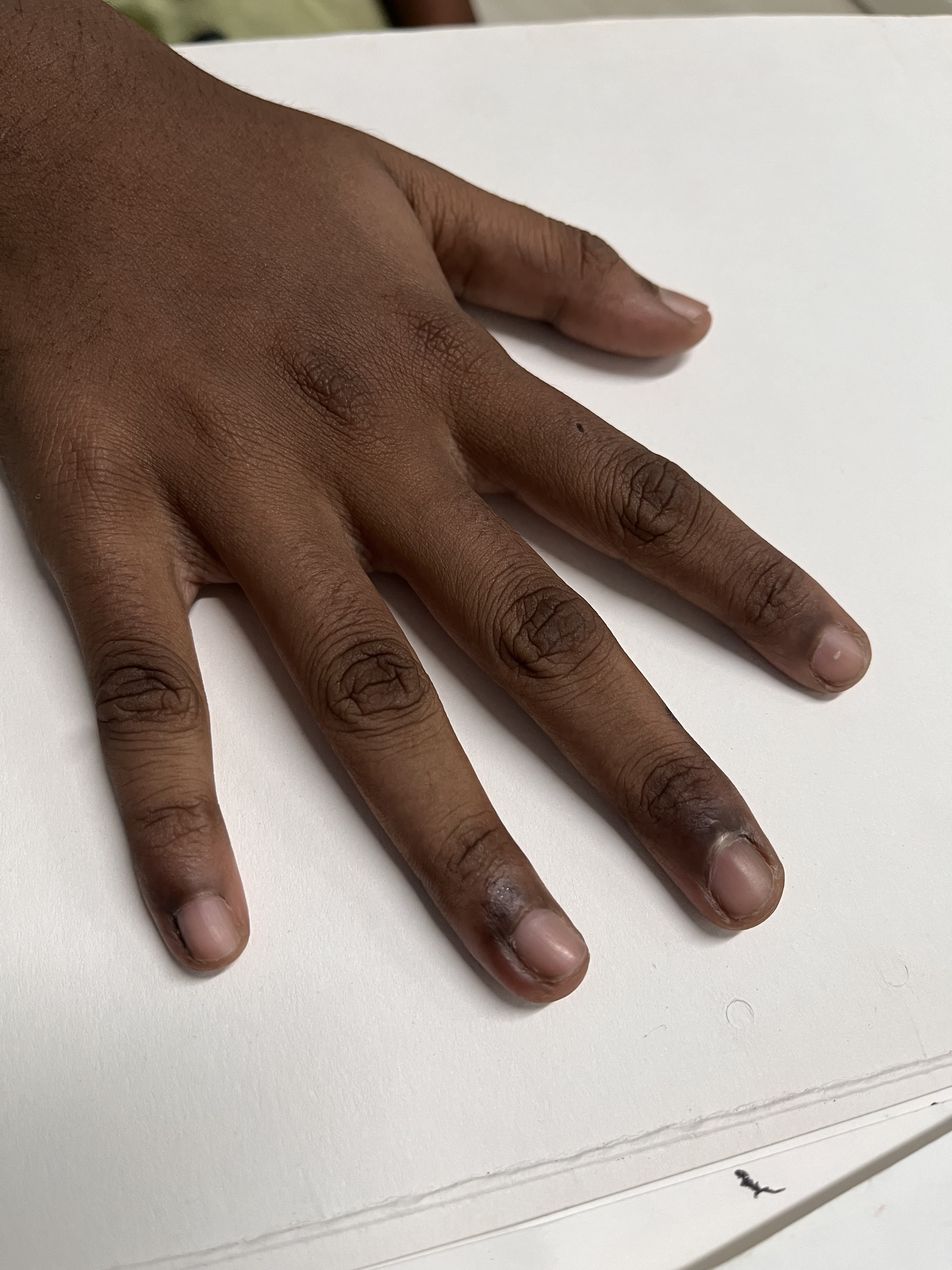Nail Fungus
Introduction
Onychomycosis, also referred to as nail fungus, is a typical fungal illness that affects the toe and fingernail nails. Numerous fungi, including dermatophytes, yeasts, and molds, are to blame for the illness.
Under the nail, nail fungus usually begins as a white or yellow spot that over time spreads and thickens the nail. In severe instances, the affected nail may even separate from the nail bed. The affected nail may also become brittle, distorted, and discoloured. Although toenail fungi rarely hurts, it can be uncomfortable or have a bad smell.
Older individuals, those with compromised immune systems, and those with a history of athlete’s foot or other fungal infections are more likely to develop nail fungus.

Pathophysiology
The invasion of the nail bed by the fungal organisms, which can happen through a break in the skin or nail or through the hyponychium, the region under the free edge of the nail, is the usual beginning of nail fungus. The nail then turns discolored, thickens, and becomes brittle as the fungus expands throughout it. Debris may gather beneath the nail and the nail may detach from the nail bed.
Factors like bad hygiene, a warm, moist atmosphere, and weakened immunity can make the infection worse. Nail fungus is more likely to form in people with diabetes or compromised immune systems. In order to increase the nail’s susceptibility to infection and devastation, the fungi that cause nail fungus produce enzymes that break down the nail’s proteins. The fungi also create toxins that can harm neighbouring tissues and induce inflammation.
Signs and Symptoms
Nail fungus, also known as onychomycosis, can cause a range of symptoms. The most common symptoms include:
- Thickened manicure: A thickened nail can be challenging to trim or file.
- Discoloration: The nail might start to look yellow, brown, or colourless. It could also have dark lines or spots.
- A brittle or crumbly nail: This type of nail is more likely to break readily.
- Misshapen or deformed nail: The nail may develop a misshapen or deformed look.
- Bad smell: The nail might have a bad smell.
- The nail may come away from the nail base, which could be painful and uncomfortable.
- Pain: When pressure is applied to the affected nail, nail fungus can occasionally result in pain or soreness.
How do Dermatologists treat Nail Fungus?
The sort of fungus present, the severity of the infection, and other elements, including the patient’s general health and medical history, all influence the treatment option.
- Topical antifungal drugs: These drugs are applied straight to the skin around the infected nail. They can take several months to start working and are frequently used for minor to moderate infections.
- Oral antifungal drugs: These drugs are taken orally and have the potential to be more successful than topical remedies. They should be used with care, though, as they may have side effects and interact with other medications.
- Laser therapy: In this procedure, a laser is used to heat and kill the nail fungi. It is a more recent treatment choice, so insurance may not cover it.
- Nail removal: To allow for new, healthy nails in instances of severe nail fungus, the affected nail may need to be surgically removed.
It’s essential to remember that nail fungus can be challenging to treat and may not fully go away for several months. Additionally, it’s crucial to maintain good foot and nail hygiene, which includes keeping the feet dry and clean, donning clean socks, and staying away from sharing personal things like nail clippers. A dermatologist can advise on the best course of action for a particular person’s instance of nail fungus.

Before & After Treatment Images

